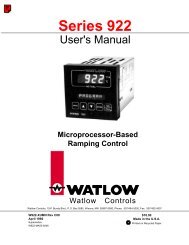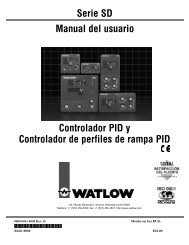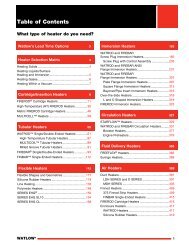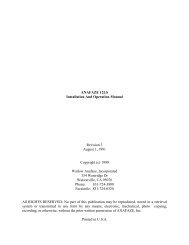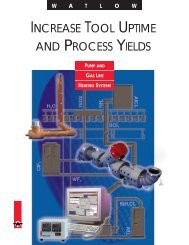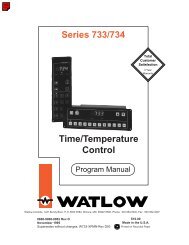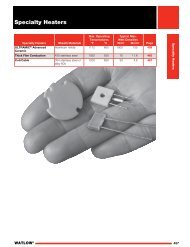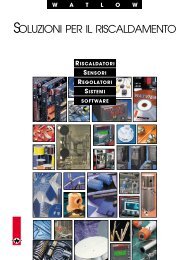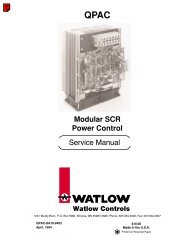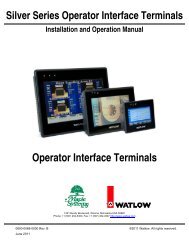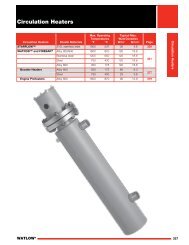pid practical guide.pdf - Watlow
pid practical guide.pdf - Watlow
pid practical guide.pdf - Watlow
You also want an ePaper? Increase the reach of your titles
YUMPU automatically turns print PDFs into web optimized ePapers that Google loves.
2.0 Proportional, Integral, and Derivative OverviewIn the industrial process control field there are many written explanations of Proportional,Integral, and Derivative control and yet, after reading the theory, many users are still mystified.What is Proportional, Integral, and Derivative and why do you need it? How do you tune it?These are some of the most asked and most unanswered questions by users.The following text is an attempt to provide answers to these questions from the user'sviewpoint. The answers are meant to be clear uncomplicated instructions for effectively usingProportional, Integral, and Derivative as well as defining some of the most commonterminology used in the control industry today.2.1 Basic Elements of Proportional, Integral, and Derivative Control SystemsA control loop may consist of four or five elements and it may control in an open loopor a closed loop form.• Primary Element: senses the Process Variable. A thermocouple measuringtemperature is an example.• Controller Element: may or may not be able to accept the signal from the PrimaryElement without signal conditioning. If the controller element is not electrically designedto receive the input directly, a signal Conditioner Element is needed (See below).• Signal Conditioner Element: when a Signal Conditioner Element is needed, anotherelement is added to the control loop. This element transduces the Primary Elementsignal into a signal that is acceptable to the Controller Element. Example: PSI into 4-20mAdc.• Final Control Element: the Controller Element sends the control signal to the FinalControl Element. The Final Control Element controls the Manipulated Variable Element.The Final Control Element may be a motor positioning valve used to control the deliveryof natural gas into a burner system, or a Solid State Relay controlling voltage into anelectric load.• Manipulated Variable Element: the energy of the process such as Electrical Power,Steam, Natural Gas, etc. needed by the process for the process variable to reach theset point.2.2 Output ConfigurationThe output configuration is sometimes confused with the control mode. Outputs canbe configured in various ways (i.e., heat, cool, alarm, etc…) and in various combinations;the combinations are limited only by the control type. The output configuration has noimpact on how the controller will respond to the difference between the process variableand the set point.4



